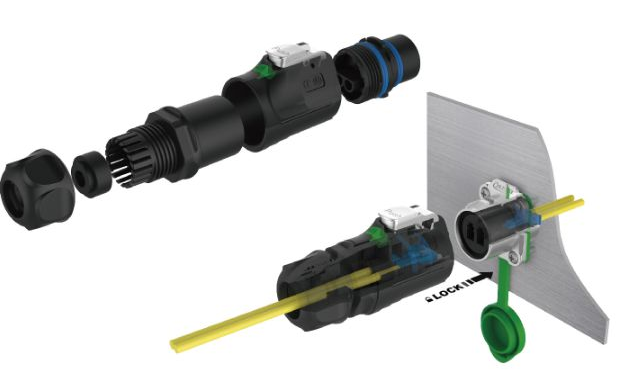Different from the BNC connectors commonly used in the A/V industry, optical fiber connectors gradually develop with the continuous maturity of optical fiber technology. The copper wire connector generally does not have a great impact on the signal loss of the AV system, while the optical fiber connection is different. It will have a very large impact on each interface in the transmission system. Let us take a look at some of the problems that arise in the physical connection of optical fibers. The optical fiber transmission equipment itself can order the connection, but in some cases, most or almost all of the optical fiber transmission connection choices are made by humans. The amount of signal lost by the optical fiber cable during signal transmission is mainly determined by the quality and type of the optical fiber cable used, and a certain amount of signal loss will occur at each connection end. Depending on the type of optical fiber connector selected by the user, the total amount of signal loss at the connection end may exceed the amount of signal loss generated by the optical fiber cable itself.

In the design of the optical fiber system, the system can operate normally, which achieves very good results. In the system design, we need to consider some unexpected problems that may occur in the system, and let the system achieve normal operation results. In the system design, we have to consider the worst possible situation of the system, and make corresponding plans, looking forward to better operational results. Optical fiber connector designers must keep this concept in mind. In system design, a safe and stable system connection requires smooth and square fiber ends. The connection between the ends must be accurate, and the accuracy must even reach micrometers, one millionth of a meter. The diameter of commonly used multimode fiber ranges from 50-62.5 microns, while the diameter of single-mode fiber is only 8-9 microns. Comparing this diameter size with the diameter of a hair (17-180 microns), it can be seen that any slight error can bring catastrophic losses.
Optical fiber connection requires very strict equipment precision, so the connector must be very clean. Fiber optic connectors and accessories are usually installed in a case. A fingerprint or external dust may seriously affect the performance of the connector and even cause transmission failure. Therefore, when the connector is not connected, it should be stored in a clean protective cover. in.
When connecting, we should also wedge the fiber optic connector tightly. In all current fiber optic connector designs, "ferrules" are used to ensure that the connectors are accurately matched. The fiber optic terminal is tightly hooped inside the ferrule through glue or crimping, and becomes a permanent component. After inserting the built-in optical fiber, the end of the ferrule is smoothed to provide a smooth interface for the optical fiber connection of the connector. Ferrules are usually made of relatively hard materials such as ceramics. Of course, they can also be made of stainless steel, plastic or tungsten carbide. The diameter of SC, ST and FC is 2.5 mm. The diameter of LC is 2.5 mm. Is 1.25 mm. Since the functional characteristics of the ferrule can be produced in accordance with the precision requirements, it has become the most important determining characteristic of the optical fiber connector. Among the many connection ferrules, the spring-type container connection ferrule ensures the coaxial alignment between the optical fiber and the LED or laser source.
With the development of technology and the expansion of applications, optical fiber connectors are also developing rapidly. There are about 12 or even more types of optical fiber connectors in use on the market, each of which came into being to meet specific needs. Of course, there are certain technical limitations. The current market trend is mainly toward the development of a moderately priced, compact connector model that can support the greater transmission density required by the new transmission distribution system. As users expect, the continuous development of the telecommunications industry has also promoted the large-scale application of optical fiber, largely due to the rapid increase in the demand for optical fiber connections for various types of communication and entertainment services.
Terminal considerationsTraditionally, fiber optic terminals are generally slower, more expensive, and have high requirements for equipment and technology. These factors should be considered when considering the fiber optic terminal in a single-mode cable. In some cases, we can completely choose some cables that have been set up with terminals according to various fiber types.
In tailor-made applications, we can only choose specific terminals. However, the use of splicing tools can reduce the length of the field terminal extension of the single-mode fiber, reducing the number of equipment requirements and the use of technology. For multi-mode fiber optic cables, the new splicing method adopts a simple fiber cutting method and then assembles the cables into pre-designed connectors/cables. This method is very simple, but the fiber-to-fiber connector is butted, and a special optical gel is usually used at the connector to condense the fiber terminal.
Fix- Mounted Scanner,Barcode Scanner For Warehouse,Ccd Barcode Scanner,D Fixed Mount Scanner
Guangzhou Winson Information Technology Co., Ltd. , https://www.winsonintelligent.com